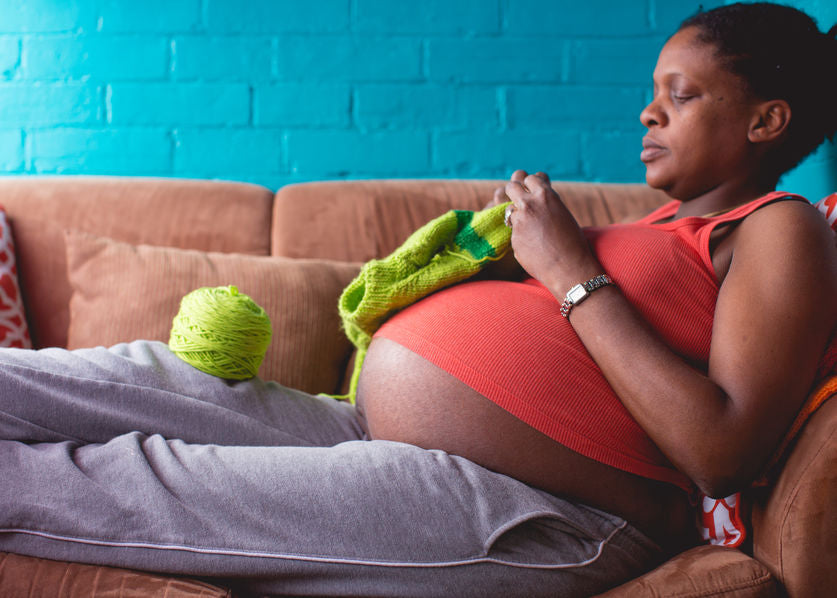
How Cloth Pads Helped Me Avoid A Traumatic Postpartum Experience
Guest BloggerFrom the first stages of pregnancy awareness up to child birth, expecting parents are sent a barrage of information on what’s “best” for baby.
The wealth of information is damn-near overwhelming. When you’re pregnant, everyone has an opinion regardless of qualifications.
During my first pregnancy, I listened to those tips and took in as much information as I could. Like everyone, I wanted to be the best mother possible. But interestingly, I found myself with an abundance of child-rearing tips but almost no information on what to do after I’d given birth.
As a result, I found myself dealing with a lot of pain (thanks to an episiotomy and retained placenta), minimal assistance, and a buttload worth of birth trauma.
For the sake of full transparency, I was anxious and almost terrified when I found out that I was pregnant with our second child. I was excited about the pending bundle of joy, but I was terrified about the healing process.
The first couple of months post birth are as transformative as they are painful. Everything hurts, sleep is rare, and there’s so. much. discharge.
After my first birth, I broke the bank trying to afford formfitting Depends- but I knew this time I’d be a mother of two. I wouldn’t have the money, free time, or energy for that reoccurring need.
I wanted to try something different this go round. And I knew if I wasn’t successful, I’d have one more risk factor for postpartum depression.
Since my first birth, a lot had changed about the way I handed menstruation and discharge in general.
Motherhood has a way of reducing the discomfort you have related to discharge. And over the last few years, the natural progression was making the shift from disposable pads (I’ve ALWAYS hated tampons) to menstrual cups and period undies.
Out of nowhere, it dawned on me- it was completely possible for me to use what I already had. Chances were, using cups wouldn’t be the best idea when my body was healing an open wound.
But I realized my cloth pads could serve the same purpose.
So, after an unexpected induction, and an unfortunate second run-in with retained placenta, I started using cloth pads.
Initially, I worried that the amount of discharge would be too much for such a small cloth to handle. But not only did my pads work great for reducing leaks - I didn’t have to deal with the annoying cold backflow that came with traditional pads. Not to mention I didn’t have to worry about the adhesive wearing out like with my former go-to, maxi pads.
Special features aside, I was TIRED of being pregnant and I couldn’t wait to get my body back. Pregnancy is physically taxing and makes it hard to do just about everything. Now that I’ve found myself on the other side, I’m waiting for the long painful transition of being “me” again.
Being able to wear underwear instead of constant adult diapers made me feel normal. It’s hard to feel attractive when wearing knock-off depends and I was more than grateful to be able to wear my usual cotton underwear.
Of course, it wasn’t all easy. After decades of socialization that menstruation and similar body fluids were “gross” it was a challenge to stop negative messages I’d been taught about body fluids on cloth from making me feel weird.
Overcoming the learned stigma of menstruation, birth, and feeling like an outsider requires continuous self-work. Naturally, postpartum is an emotionally (and hormonally) charge time.
It also meant having to do laundry. Those first few weeks were the most difficult and heaviest in terms of flow. My mom was helping manage household tasks and I was embarrassed at the prospect of her coming across a blood-filled piece of cloth.
Thankfully, my mom isn’t one to shame, and if she noticed them in the wash, she didn’t say a thing to me.
This go-round, I wanted physical and emotional comfort. My first birth had a lasting impact on the way I felt about my body and my identity as a woman. I was determined to avoid some of the discomforts I felt the first time - even though I couldn’t dodge the bullet with my placenta.
And I think I was pretty successful.
Using non-traditional menstrual products gave me a lot to think about in the postpartum stage. Some of the things I considered were easy and expected like having to spend less money and not having to run out of the store for several sets of pads. Others of those things required higher levels of introspection and further question of our social norms surrounding menstruation.
When it comes to my menstrual cycle, I will always be a cup girl. But this experience taught me that there are more options that need to be explored.
And sometimes, it’s easier to use one reusable instead of several disposable pads.
Thanks to Rochaun Fernandes for sharing her postpartum story with us!




